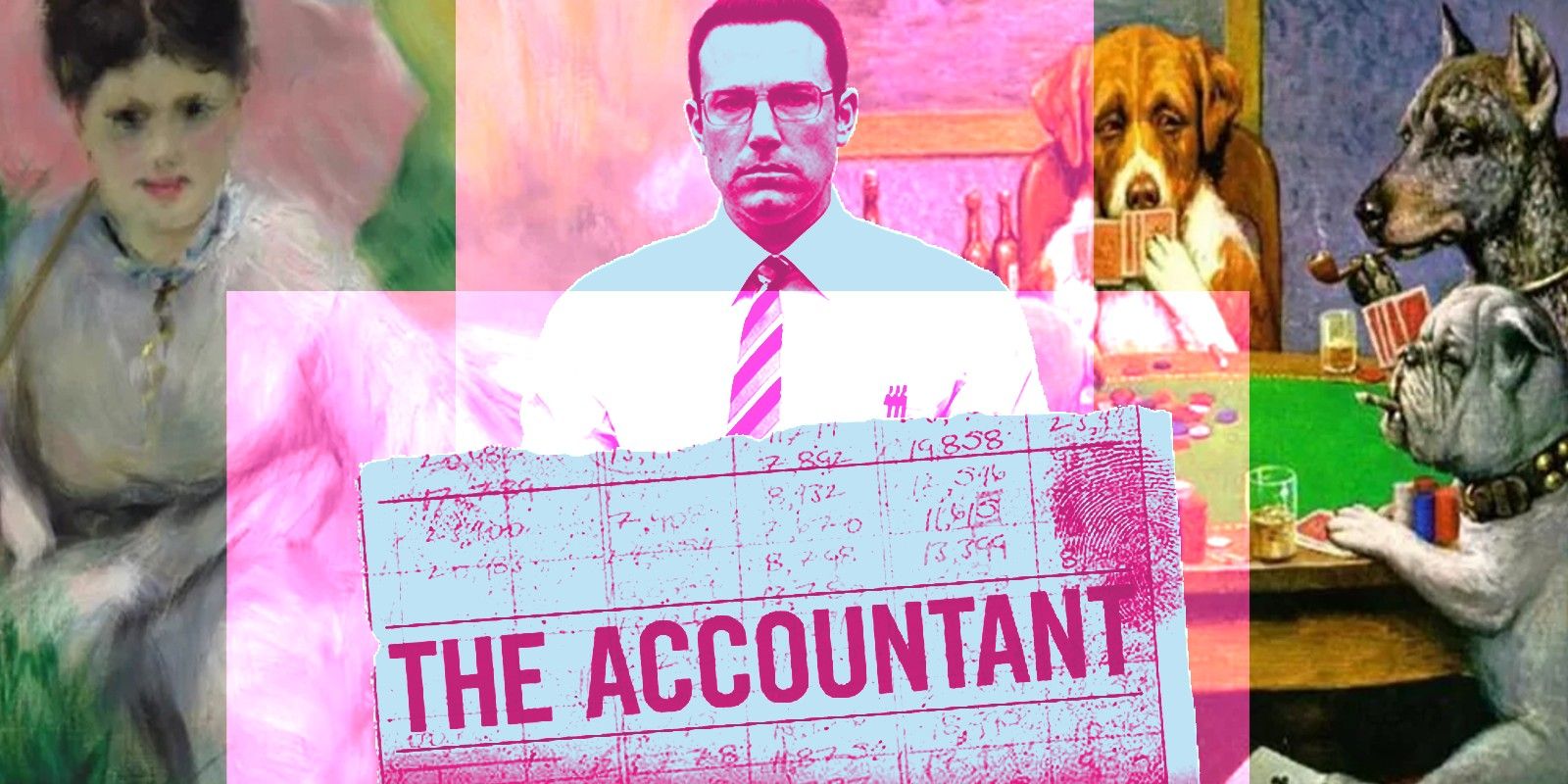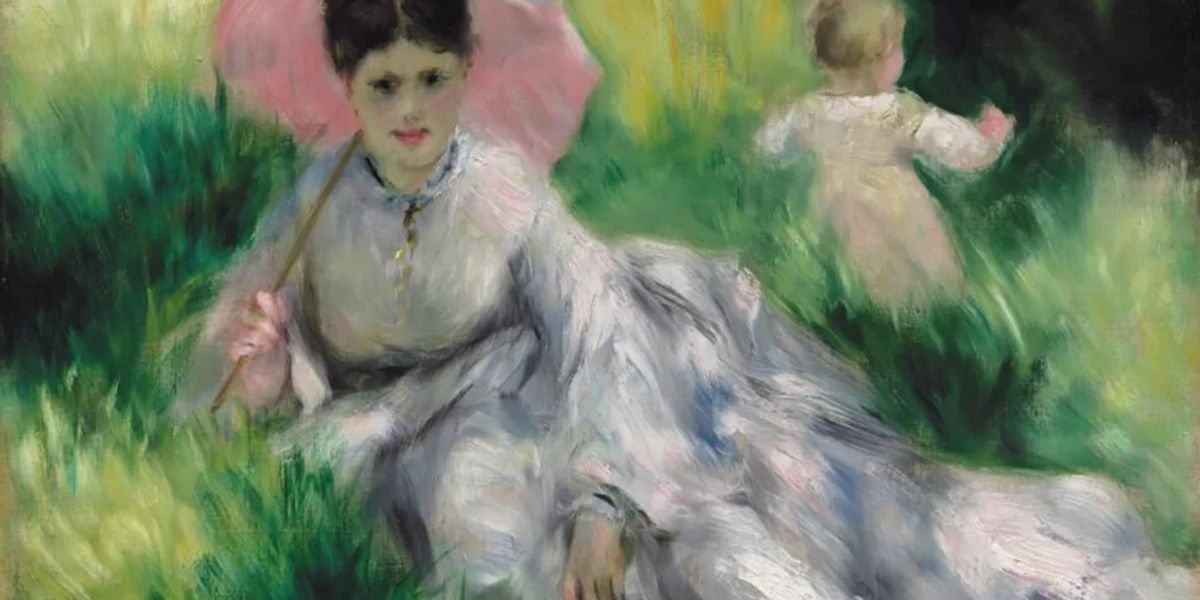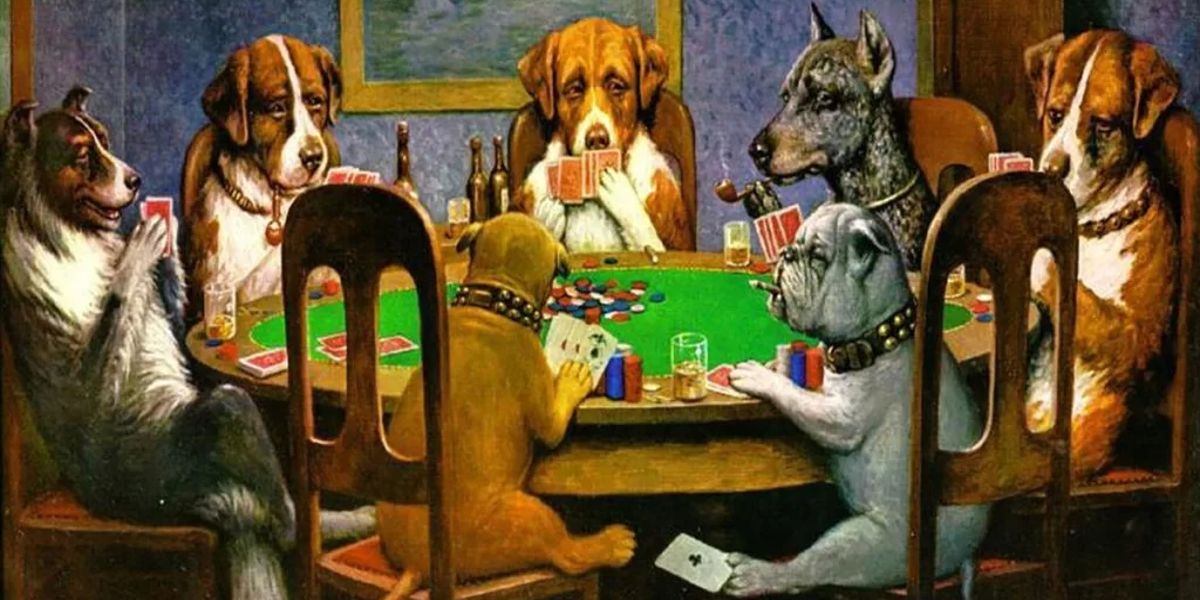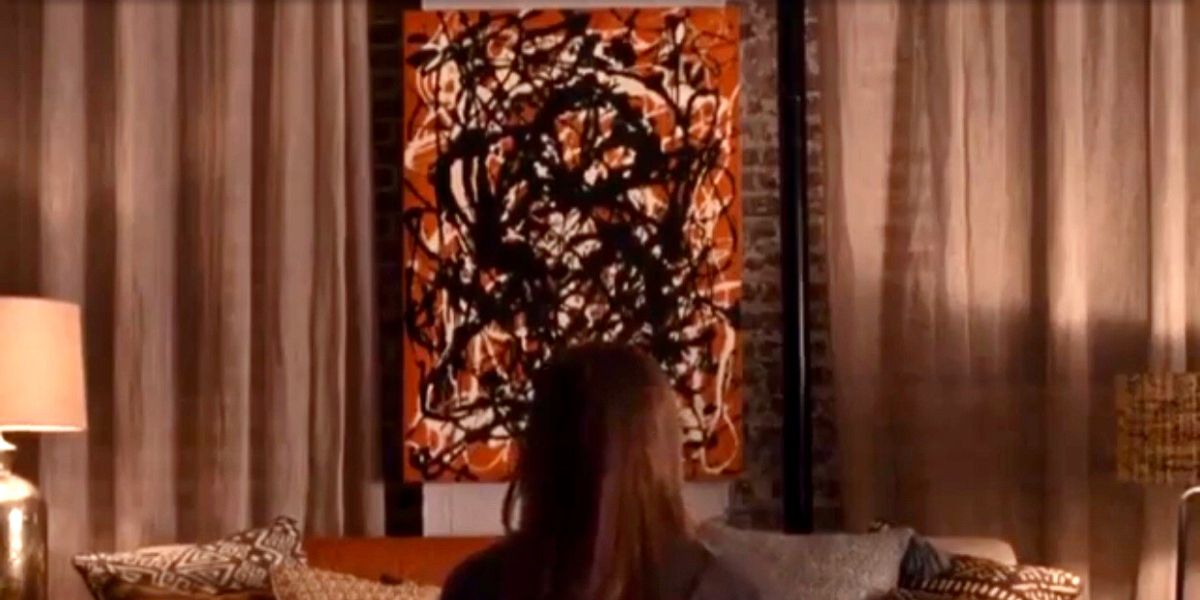3 paintings feature prominently in the 2016 action-thriller The Accountant, and each of them has a different meaning. Starring Ben Affleck, Anna Kendrick, and J.K. Simmons, the Gavin O'Connor-directed film follows Affleck's Christian Wolff, a soft-spoken man who spends his time vacillating between being an accountant and a dangerous assassin, for which he's compensated handsomely. For services rendered, Wolff accepts cash as well as fine art, and three separate paintings are given prominence; Pierre-Auguste Renoir's Woman with a Parasol and Small Child on a Sunlit Hillside, Jackson Pollock's Free Form, and Cassius Coolidge's A Friend in Need.
While Affleck's Air bombed at the box office when it was expected to do well, The Accountant was a sleeper success, perhaps because of its unexpected pairing of John Wick gun-fu with art caper intrigue, and a thought-provoking subplot about mental health due to Wolff's high-functioning autism. The paintings that feature in Wolff's world are not only incredibly valuable, but they also offer value within the context of the plot itself. Fraught with symbolism as well as creative accomplishment, The Accountant paintings seem to add depth to Wolff's storyline, as well as insight into the inner workings of a complex and brilliant mind.
3 Woman In A Parasol By Pierre-Auguste Renoir
Pierre-Auguste Renoir's Woman in a Parasol and Small Child on a Sunlit Hillside is representative of the Impressionist movement, which began in the mid-19th century and focused on loose compositions and quick techniques to fully capture ephemeral things like light and movement in a subject, often finishing a painting in a single sitting (unheard of at the time). Though Renoir's painting depicts a mother and child in situ, an innocent and nurturing image, Wolff chooses to hang it outside his weapons room. This plays into him not only being at odds with his surroundings much of the time but also his relationship with his own mother.
The mother in Renoir's painting is the feminine ideal, soft and inviting, while Wolff's mother was emotionally unavailable and absentee. It can serve both as a reminder of what he lost and also an acceptance of sorts of being abandoned to be raised by a militant father. Later in The Accountant, Wolff is able to sell the painting (though he takes a price cut to do so) as though he's closing that tumultuous and painful chapter of his life.
2 A Friend In Need By Cassius Coolidge
It's been duplicated many times, but Cassius Coolidge's A Friend in Need remains the definitive rendition of charming anthropomorphized animals gathered around a poker table. The painting, one of sixteen others in Coolidge's series Dogs Playing Poker has remained popular because of the humor its kitsch levies at the serious-minded art critic. While it might seem frivolous, this painting has a specific meaning in the context of Wolff bonding with fellow accountant Dana Cummings (Kendrick) and learning about her love of art in college.
To Dana's family, the painting represents something ridiculous and mainstream, but Wolff instantly sees its appeal, "I like Dogs Playing Poker," he says at one point, "because dogs would never bet on things, and so it's incongruous. I like incongruity." As someone who lives his life by a rigid structure of logic rather than chances or risks, Wolff sees the value in the painting for its irony and maybe even its sentimentality, rather than for its value, which comes into play later in the film when it's used to disguise the nearly priceless Jackson Pollock Free Form, which Wolff gives to Dana as a token of his appreciation.
1 Free Form By Jackson Pollock
One of the most well-known paintings in the world and the most valuable of The Accountant's paintings, Jackson Pollock's Free Form was created by pushing the boundaries of the conventional art world after World War II. Rather than create on an easel, Pollock decided to reflect the erratic shift in the post-war art world by exploring creation outside the limiting scope of a canvas. Rather than place his canvas planes upright, he put them on the floor and haphazardly flung, poured, and dripped paint on them from all directions, representing uncontainable action and self-expression.
Pollock's Free Form exists in two worlds because it's both an object and a piece of art, and it's both confined by the constraints of the canvas, and yet it transcends them. It challenges onlookers to engage beyond the border of the known, much like where Wolff exists somewhere between being an accountant, a hitman, and a human capable of great emotion. It's the one painting The Accountant won't sell, finding comfort in its chaos and unexpected patterns as he gazes up at it from bed, instead choosing to give it to Dana, the only person who has managed to understand all of his facets.




